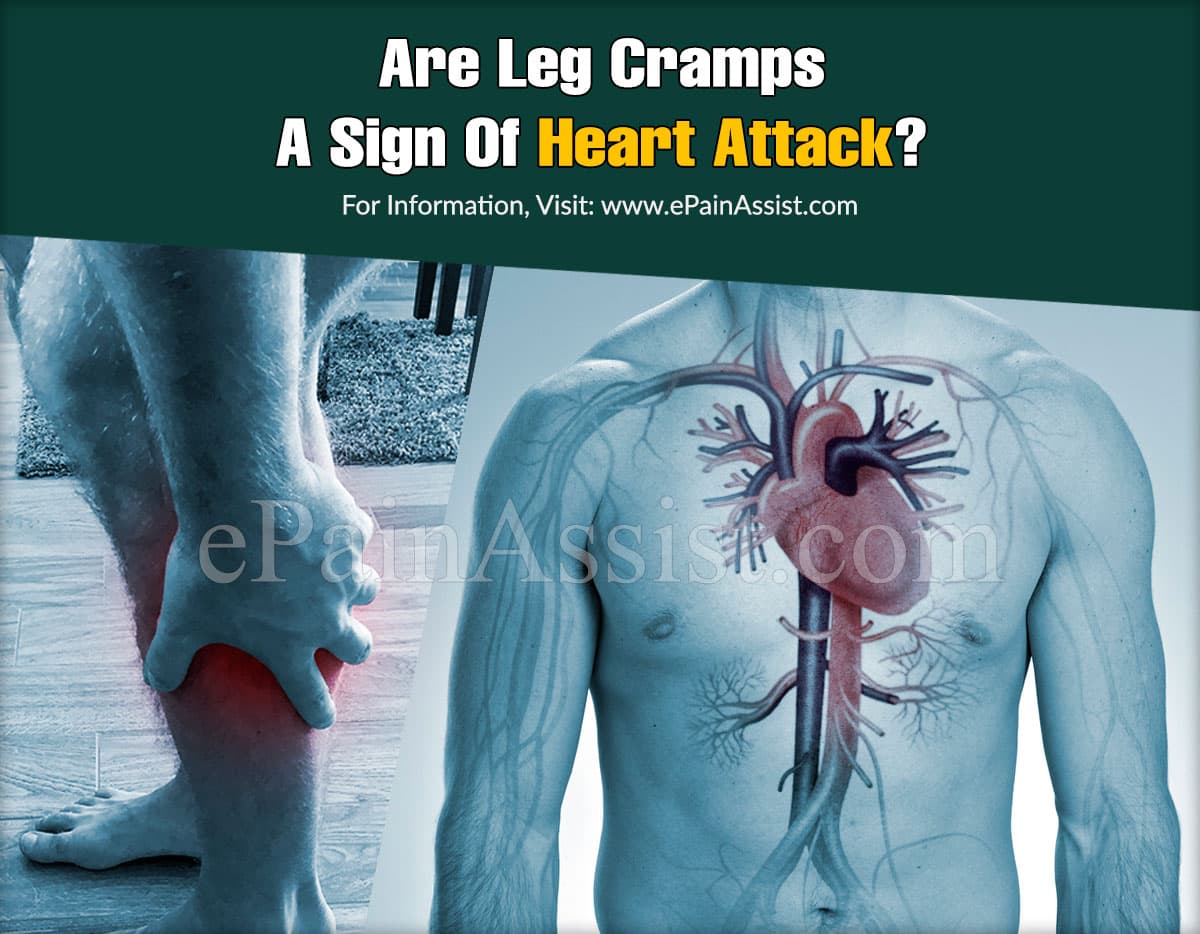Muscle cramps are periods of sudden, short lasting, painful and involuntary contraction of a single muscle or a group of muscles. These cramps can occur either at day or at night. These mostly occur during intense physical activity but may also occur at rest.
When we use our muscle voluntarily, they work rhythmically by contracting and relaxing but when a muscle cramp occurs, this synchronicity is lost and the muscle suddenly contracts and sustains this for certain amount of time up to a few minutes or seconds. Then the muscle relaxes on it’s own. Muscle cramps can occur in any muscles that we control voluntarily. These are mostly seen in the muscles of legs and feet.

Are Leg Cramps A Sign Of Heart Attack?
Yes, leg cramps can be a sign pointing towards heart problems and heart attack. It has been found that when a person has leg cramps and leg pains, there are chances that the same person will die within five years and the cause of death is mostly heart attack. When there is poor circulation of blood in the legs, there is occurrence of muscle cramps. When a person faces problem of muscle cramps in the legs and is not able to walk properly, the person must be checked for the possibility of having Peripheral Artery Disease (PAD). PAD is a disease where your arteries don’t work properly and there is problem with blood supply.
Basically there is cholesterol and fat deposit in the arteries of the legs. Muscle cramp is the most common and prominent feature seen in PAD. Sometimes this disease remains painless. The person must be checked for the possibility of PAD. When an artery in the leg is blocked, it mostly means that the arteries in the heart are also clogged. Due to this block in the arteries of leg, there is inadequate blood supply to the muscles of the leg and this leads to muscle cramping. Other symptoms of PAD are non-healing wounds, poor nail and hair growth, pain is legs while sleeping, cold legs. The risk factors for having PAD are age more than 50 years, people who have high blood pressure, people who have diabetes, people who have high cholesterol levels, people who smoke and obese or overweight people. PAD can be diagnosed with the help of an ultrasonography test. PAD can be treated with the help of proper and healthy diet, daily exercise, controlling blood sugar level, taking regular medications to keep blood pressure under control and controlling the cholesterol levels. (1)
How To Prevent And Treat PAD (Peripheral Artery Disease)?
The ways to prevent PAD are same as that for preventing heart attack. The preventive measures include:
- Eating healthy food
- Getting regular exercise
- Quit smoking
- Weight loss if you are over-weight
- Check your blood sugar levels
- Check your cholesterol levels
- Check your blood pressure regularly and keep it under control.
It is recommended that anyone who experiences leg pain and discomfort in the legs should go to their health care provider immediately. Doppler test is done usually to check for PAD. It is an ultrasound test and it also detects the amount of blood pressure present in the extremities. If a block is found via Doppler study, then the doctor might recommend you to get MRA (Magnetic Resonance Arteriogram), which is a type of MRI (Magnetic Resonance Imaging) study, where a special dye is injected into the body and then the arterial architecture is visualized.
If a blockage is found then either angioplasty or bypass surgery can be done. In angioplasty, a tiny balloon is placed in the lumen of the artery to make it wider for proper blood supply. In bypass surgery, new graft is inserted for proper supply of blood to the area that was blocked. (2)
Conclusion
Are leg cramps a sign of heart attack? The answer to this question is, yes. When there is cramping in legs, it might be due to blocked artery that causes poor blood supply to the muscles and this leads to muscle cramps. When there is blockage in the arteries of legs, there are high chances that blockage will be present in the arteries of the heart too. So, the patient must always look out for the possibility of PAD.
Also Read:
- What Can Cause Leg Cramps and Treatment To Stop Cramping of Leg Muscles
- Causes of Leg Cramps While Swimming & Ways to Deal With it?
- Do Bananas Help With Leg Cramps?
- How To Stop Leg Cramps Fast?
- Are Leg Cramps A Sign Of Blood Clots?
- What Is The Best Vitamin For Leg Cramps?
- What Are Leg Cramps At Night A Symptom Of?
